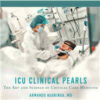Fluid Personalization and Vasopressor Decisions in Early Sepsis Management
jamanetwork.com
In this randomized vignette survey study of US critical care clinicians, we found that fluid volume already received was associated with the largest changes in decisions to administer additional fluids or initiate vasopressors in patients with sepsis.
In contrast, other clinical factors (past medical history, respiratory status, lactate trend, and AKI) had small associations with these resuscitation decisions.
Most respondents chose to start vasopressors peripherally, with higher or increasing vasopressor dose and longer duration associated with the subsequent decision to place a central line.
The findings of this survey study provide important insight into clinician decision-making in early sepsis resuscitation.
Fluid volume already received was the predominant factor associated with decisions about additional fluids and vasopressors, outweighing many other clinical factors.
Peripheral vasopressor use was common.
Future trials aimed at personalizing resuscitation should account for the association of received fluid volume and should work to validate easily accessible bedside tools beyond clinical factors, such as dynamic fluid-responsiveness measures, to help guide personalization.




















